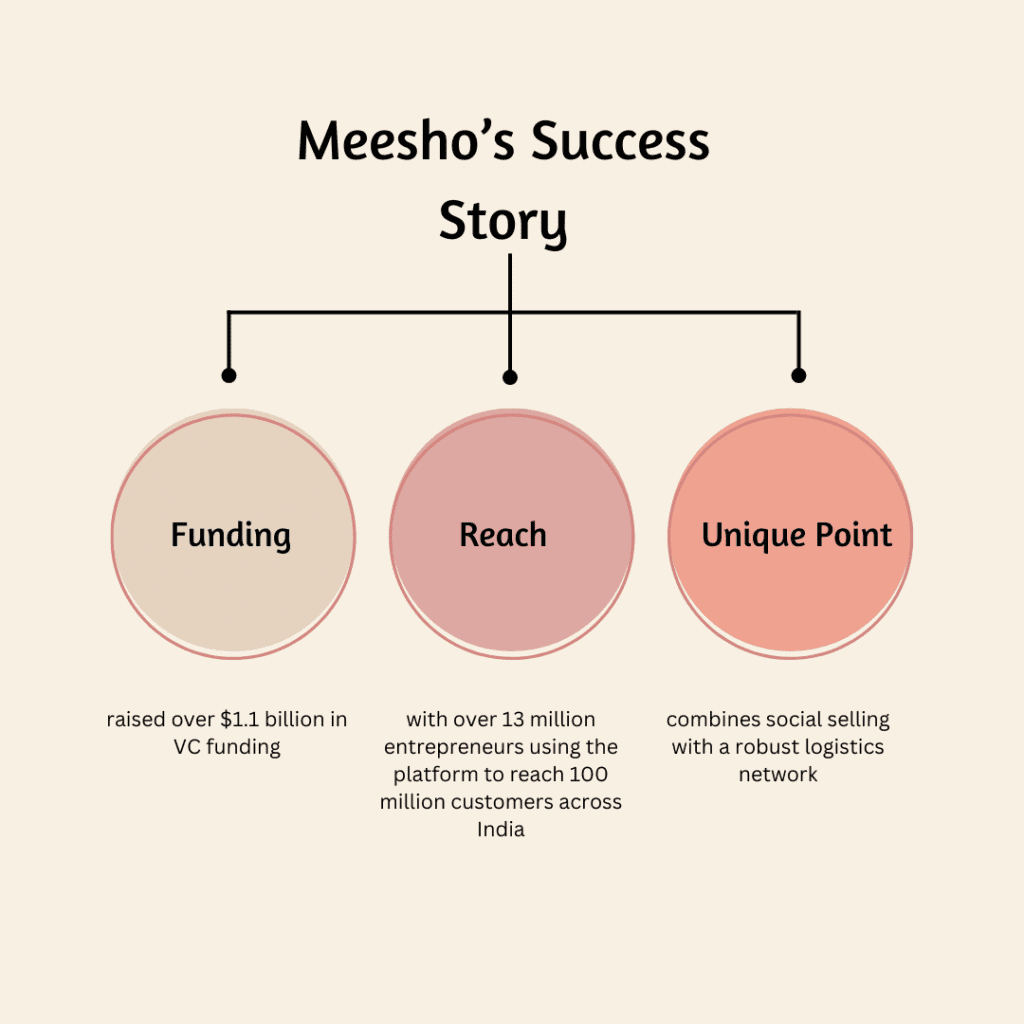India’s e-commerce landscape is undergoing a significant transformation driven by the rise of social commerce. This innovative model combines social media and online shopping, creating a new shopping experience that integrates social interactions with commerce.
Venture capital (VC) is playing a crucial role in this evolution, fueling the growth of social commerce platforms and startups in India. Here’s a deep dive into how VC investments are propelling this next wave of e-commerce innovation.
The Rise of Social Commerce in India
Social commerce leverages social media platforms to facilitate online purchases, turning social interactions into sales opportunities. In India, this trend is gaining momentum due to several factors:

– High Social Media Penetration: India has over 600 million social media users, creating a fertile ground for social commerce. According to Statista, India’s social media user base is projected to reach 700 million by 2025.
– Mobile-First Culture: With more than 1.2 billion mobile connections, India’s mobile-first culture drives the adoption of social commerce, where users engage with brands and make purchases through their smartphones.
– Influencer Power: Influencers and content creators play a significant role in shaping consumer behavior in India, enhancing the effectiveness of social commerce strategies.
VC Investment Driving Social Commerce Innovation
1. Empowering Social Commerce Platforms
Venture capital is instrumental in supporting and scaling social commerce platforms that integrate shopping with social media. For instance, Meesho, a social commerce startup, has raised over $1.1 billion in VC funding. Meesho enables individuals to start online businesses by leveraging their social networks to sell products.
Case Study: Meesho’s success is evident in its rapid growth, with over 13 million entrepreneurs using the platform to reach 100 million customers across India. The platform’s innovative model combines social selling with a robust logistics network, illustrating how VC backing can scale social commerce solutions effectively.

Fact: According to a report by RedSeer, the social commerce market in India is expected to reach $16 billion by 2025, driven by increased VC investments and growing consumer adoption.
2. Innovative Features and User Engagement
VC funding enables startups to develop and enhance features that boost user engagement and streamline the shopping experience. Khatabook, initially a digital ledger app, has expanded into social commerce with its new platform, Khatabook Shops. This platform allows small businesses to set up online stores and leverage social media for sales.
Data Point: Khatabook’s shift to social commerce has seen significant growth, with over 20 million small businesses using the platform to digitize their operations and engage with customers online.
3. Supporting Niche Social Commerce Startups
VC investments are also fueling niche social commerce startups that cater to specific consumer needs. GlowRoad, another prominent player, focuses on hyperlocal social commerce, allowing users to sell products within their communities.
Case Study: GlowRoad raised $70 million in Series C funding and has expanded its platform to serve over 2 million resellers across India. The platform’s success highlights how VC funding supports specialized social commerce models that address local market needs.
Impact of Social Commerce on the E-Commerce Landscape
1. Enhanced Consumer Experience
Social commerce enhances the consumer experience by integrating social interactions with shopping. Platforms like Shopify and Facebook Shops allow brands to create seamless shopping experiences directly within social media channels. This integration boosts consumer engagement and drives sales.
Fact: A survey by eMarketer found that 55% of Indian consumers are more likely to make a purchase when they see products recommended by friends or influencers on social media.
2. Expansion of Market Reach
Social commerce platforms enable businesses to reach new customer segments and expand their market reach. For example, Blys uses social media to connect beauty professionals with clients, facilitating bookings and transactions through social channels.
Data Point: According to a report by Nielsen, social commerce has helped brands reach 30% more customers compared to traditional e-commerce methods.
Conclusion
The social commerce boom in India represents a significant shift in the e-commerce landscape, driven by the integration of social media and online shopping. Venture capital is at the forefront of this transformation, supporting innovative platforms and startups that are reshaping the way consumers interact with brands and make purchases.
For HNIs, investors, wealth managers, and VCs, investing in social commerce presents a compelling opportunity to be part of this dynamic growth sector. As the social commerce market continues to expand, strategic investments in this area offer not only promising financial returns but also the chance to drive meaningful innovation in the Indian e-commerce ecosystem.
At Excluto, we remain committed to connecting venture capitalists and investors with emerging opportunities in this dynamic ecosystem, helping them navigate and capitalize on the next wave of innovation in India, by exploring Venture Capital as an asset class.
Read More
The Future of Digital Wealth Management Platforms: Opportunities for VCs and Investors
The Role of Venture Capital in Wealth Diversification for HNIs and UHNIs

